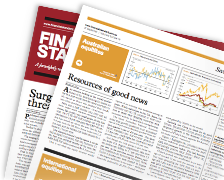Listed private equity: A strategic opportunity amid global market dislocationBY BOB LIU | FRIDAY, 16 MAY 2025 2:22PMThe sharp escalation in global trade tensions in 2025 has injected a fresh layer of volatility into capital markets. Cross-border investment flows have been disrupted, merger and acquisition activity has slowed, and many institutional investors are reassessing their allocations amid rising capital costs and heightened geopolitical risk. While this level of macroeconomic noise tends to obscure fundamentals, it also created an opportunity to reassess where true value resides. Listed private equity is one of the few segments of the market that currently offers both resilience and a compelling margin of safety. As with any form of private-markets exposure, questions arise during volatile periods around valuation transparency and liquidity. But listed private equity offers a unique combination: access to portfolios of high-quality private market investments - including private equity, private credit, and alternative asset managers - delivered through vehicles that are traded daily on public exchanges. That structure gives investors the ability to see pricing in real time and to enter or exit positions with flexibility. Importantly, it also provides a direct view into how markets are pricing risk - and where dislocations may offer attractive entry points. At present, we believe listed private equity is deeply under-valued. As of April, many listed vehicles are trading at discounts to their net asset value (NAV) figures of more than 35 per cent. These are not distressed funds or marginal managers. In many cases, the underlying portfolios are well-diversified across geographies, sectors, and vintages, with high levels of visibility into company performance and liquidity positions. What the discount reflects is sentiment, not solvency. By contrast, recent secondary market transactions for traditional private equity funds - negotiated deals between sophisticated buyers and sellers - have taken place at materially narrower discounts. This widening gap between listed and unlisted pricing, in our view, is unsustainable. For long-term investors, this dislocation presents an opportunity. Unlike past cycles, in which exuberance drove valuations ahead of fundamentals, today's market has already absorbed significant downside. Listed private equity funds have underperformed global small-cap stocks for two consecutive years. Much of the negative sentiment - higher interest rates, slowing growth, and political uncertainty - is already priced-in. What remains is a segment of the market offering access to private market returns, transparent pricing, and embedded optionality through valuation discounts. That opportunity, however, still requires discipline. We are not simply buying the cheapest names in the market. Our approach is grounded in a fundamental assessment of each listed vehicle's underlying assets, manager capability, capital structure, and return profile. In particular, we are tilting our portfolio toward companies with low leverage, high levels of recurring or contracted revenues, and defensive business models. Alternative asset managers and specialist platforms with durable fee income streams - especially in sectors such as healthcare, technology, and infrastructure - are well-represented in our portfolio today. Periods of market dislocation offer a clear test of any investment strategy. In listed private equity, experience shows that a focus on fundamentals, rather than reacting to short-term sentiment, tends to be the more durable approach. The characteristics that matter most in these conditions are the quality of the underlying assets, the strength and reliability of cash flows, and the capability of management teams to execute through market cycles. Current conditions, while challenging, may also represent the early phase of a reset in valuations across private and public markets. As transaction activity gradually returns and investor confidence improves, listed private equity vehicles are well-positioned to respond. Unlike traditional private equity structures that reprice with a lag, listed formats reflect shifts in market sentiment in real time - offering investors potential to participate in re-ratings sooner as fundamentals reassert themselves. The broader point is that volatility does not negate value; if anything, it sharpens the focus on it. Markets are adjusting to a new cost of capital, shifting geopolitical alliances and more cautious capital deployment. But these changes also drive a reassessment of asset allocation strategies - and create space for strategies that offer both transparency and return potential. We think listed private equity fits that brief. Investor behaviour during uncertain periods often skews conservatively, with a bias toward perceived safety. But some of the best opportunities emerge precisely when others are hesitant. For those prepared to look beyond the headlines and assess the underlying dynamics, we believe now is the right time to revisit listed private equity - not just as a tactical play, but as a strategic allocation within a diversified portfolio. |
Latest News
ASIC releases new relief for reportable situations regime
TA Associates invests in Viridian Financial Group
Shaw and Partners splashes $63m for New Zealand expansion
4600 relevant providers yet to meet qualification standards: ASIC
Cover Story

Moving mountains
FOUNDER & FINANCIAL PLANNER
MAZI WEALTH






















